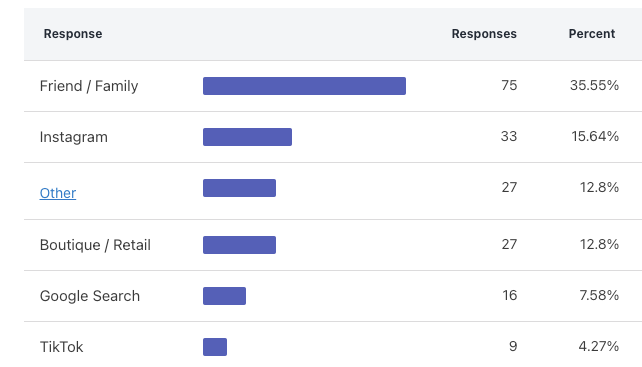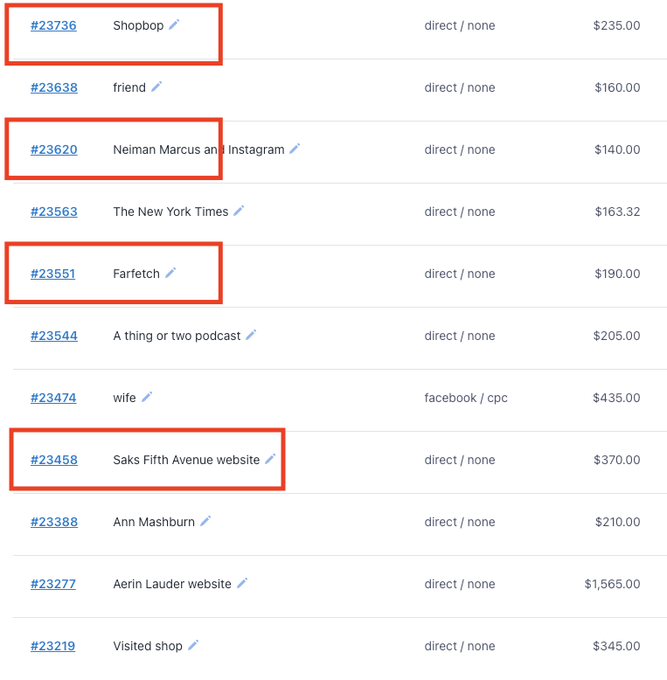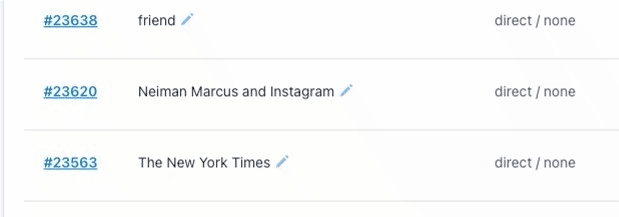Reveal The Total Effect Wholesale Has On Direct Ecommerce Sales, Using Post-Purchase Surveys

This is a partner guest article by Nick Doren, Senior Manager of Growth at Part and Sum. Learn more about Part and Sum here .
Just as everything else, online acquisition costs continue to rise every year. Part of the reason why modern online advertising is so effective is that it allows new brands to quickly reach “in-market” audiences, or those that are already shopping for your product category and are ready to buy. However, as a brand continues to seek top line expansion, it must start advertising to less qualified, out-of-market audiences.
These audiences need more education, convincing, and brand imprinting to make a purchase. This added effort equates to more dollars spent on each marginal customer and leads to a loss of advertising efficacy and increased customer acquisition costs, or CAC, as it is often referred to. Eventually, this environment of ever-increasing costs and declining efficiency becomes unsustainable.
Because of this, many brands become motivated to explore distribution & discovery channels outside of traditional paid media. Wholesale partners are a logical next step. They provide brands with something paid media cannot: an influx of potential customers seeing their products without additional dollars spent on advertising. Large retailers like Nordstrom, Saks Fifth Avenue, and Revolve have curated years of brand equity and trust and are rewarded with large swaths of customers coming both to their physical stores and websites to find new products every day.
Wholesale partners are a source of discovery for the brands that occupy their shelves. When going into wholesale, brands must understand that these retail partners are not only an additional revenue channel for the wholesale side of their business, but also an added online customer acquisition channel with spillover effects on their online DTC business.
Let’s examine just how much of an impact wholesale discoverability has on online direct ecommerce sales using real data Part and Sum collected for a long time client and partner.
Lizzie Fortunato is a New York city based women’s jewelry and accessories brand with strong wholesale distribution (both brick & mortar and online) in outlets like Nordstrom, Revolve, and ShopBop. While long suspected, it was only recently proven that these wholesale partners have the added benefit of driving quite a bit of sales volume directly through lizziefortunato.com.
In a separate effort to better understand sources of new customer acquisition, Part and Sum advised Lizzie Fortunato to install a post purchase survey Shopify app on their checkout page to ask new customers “Where did you FIRST hear about us?” In addition to getting clearer data on the impact that online advertising channels drive for the brand, it also became apparent that 12.8% of all new customers self-report discovering the brand through wholesale partners.

However, when digging into the “other” bucket of responses, the post purchase survey reveals that the percentage is actually higher than initially reported. Many self-provided-responses refer to wholesale partners the brand sells through and therefore should be categorized under the “boutique/retail” bucket of responses.

Using Fairing’s new Response Data Reclassification , which allows for manual recategorization of open ended responses, we reassigned these uncategorized long-form answers into the appropriate categories and discovered that over the last few days, 18.01% of new customers that purchased directly from the lizziefortunato.com website first found the brand through a wholesale partner!


Having access to this data when entering wholesale is critical. As a marketer, it helps rectify an influx of previously undetectable and miscategorized conversions on a last click basis. Brands fortunate enough to score a large wholesale account may experience a large spillover effect of sales to their ecommerce site as a result of the additional discoverability and awareness that physical and online retailers provide.
If a brand is stocked in a physical store, the discrepancy in conversion tracking is obvious - one cannot “click through” from a physical shopping experience to the brand’s ecommerce site. Similarly, there’s a lack of direct click through data from an online wholesale partner. A brand’s wholesale partner will not externally link to the brand’s own ecommerce site for an obvious reason: they want to claim that revenue for themselves. Any traffic and conversions generated from these points of discovery will come through reports that emanate directly - ie. a user types the brand’s URL directly into the address bar, or through organic / paid branded search.
This leads to three potential marketing problems:
- One: the marketer is unable to identify what’s causing the spike in unattributable direct & organic sales and cannot properly allocate budget.
- Two: the marketer mistakes a lift in organic / paid search to halo-effects driven by paid social advertising and incorrectly assigns credit to these platforms for the additional performance. They then mistakenly increase budgets on these channels assuming they are producing more results than they actually are.
- Three: the marketer sees a lift in paid branded search and allocates more spend to bidding on the brand’s own keywords, even though these last touchpoints in the acquisition journey are largely non-incremental.
The impact on overall allocation of resources at the business level is perhaps more important to consider. Brands selling through wholesale partners receive periodic reporting from retail partners - either weekly or monthly as to how well their product is selling through. At the end of the year, let’s say a fictional brand is generating $10 million in revenue directly through their ecommerce website and $10 million in revenue through wholesale partners. As a result, the business allocates 50% of their resources (staff, investments, production) towards growing wholesale and 50% towards growing direct ecommerce.
The same brand implements a post purchase survey and discovers that 20% of their ecommerce new customers are finding the brand through wholesale. This discovery prompts the business to reallocate resources more heavily towards wholesale since it’s proving to have synergistic effects on their overall business growth. This level of insight and control is not possible unless there is a system in place to discover the key drivers of their ecommerce revenue beyond last-click reports.
As brands continue to see customer acquisition costs rise across the board using paid media, they need to leverage alternative discovery & distribution channels like wholesale. It is important they have a system in place for reconciling the additional messiness these channels create in attributing revenue on the direct ecommerce side of their business.
With Fairing, Lizzie Fortunato now has a better understanding of a formerly “black-box” portion of its online revenue and can more accurately allocate attention and resources to the different channels it sells through, leading to smarter and more efficient growth in the long-term. As a trusted partner to our clients, Part and Sum welcomes the difficult challenge that attribution presents and works hand-in-hand with brands to introduce the necessary data collection efforts so that as a team, we can understand the most effective ways of pushing the brand forward to its next stage of growth.





